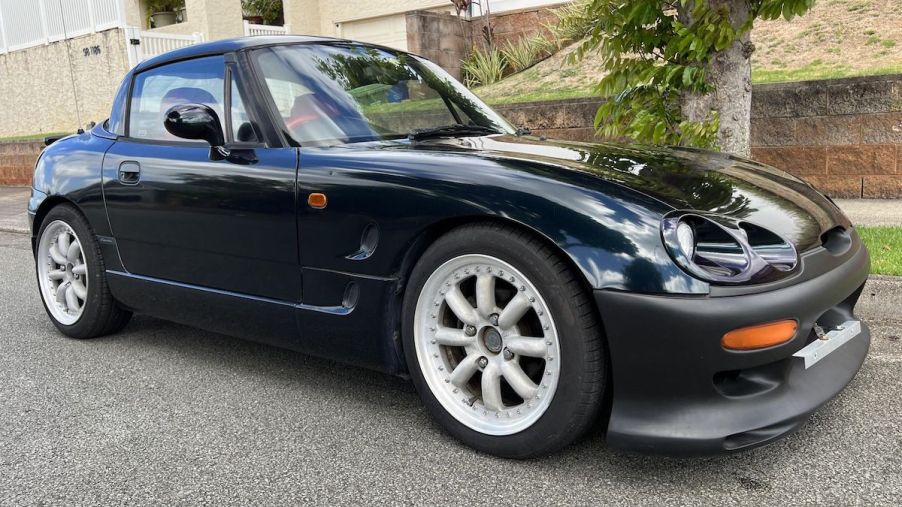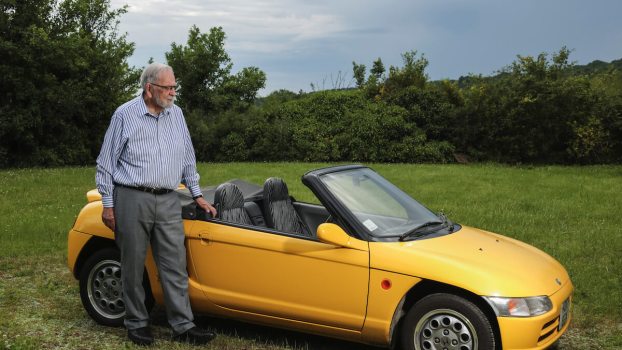
How Was the Suzuki Cappuccino Speedy While Having Under 100 Horsepower?
The Suzuki Cappuccino was a fun alternative to the Mazda MX-5 Miata produced from 1991-1998. It was specifically designed to meet Kei car regulations in Japan for tax advantages, but it was also exported to European markets. Unfortunately for American enthusiasts, it was never officially sold in the U.S.
The Cappuccino was a tiny roadster with a tiny engine. The engine displacement had to be under 660 cc to qualify for Kei car status, so it used a 657 cc turbocharged inline-three engine. It also had an unusual roof configuration that could turn into a Targa top or a full cabriolet.
Due to its aforementioned Kei car regulations, the Cappuccino had low horsepower ratings. Starting in 1990, kei cars were limited to a maximum power rating of 47 kW, which translates to 63 horsepower. The Cappuccino hit this ceiling by producing exactly 63 horsepower. So, why would any car with only 63 horsepower be fun to drive?
How lightweight is the Suzuki Cappuccino?
The main reason for the engaging driving experience of the Suzuki Cappuccino is its lightweight build. This roadster boasted a curb weight of only 1,543 lbs. That made it about 29% lighter than the NA generation of the Mazda MX-5 Miata.
In the all-important calculation of the power-to-weight ratio, the Cappuccino makes .0408 horsepower per lb of curb weight. OK, that’s still pretty low, even compared to an NA Miata. However, that doesn’t mean the Cappuccino is boring to drive.
Anyone who has driven a lightweight roadster knows that the fun doesn’t just come from the 0-60 mph time. The fun comes from driving a small car with a small engine to its limits without going at a dangerous or illegal speed. Every drive is like a little track day, all while abiding by the speed limits of public roads.
Engineering tricks of the Cappuccino
The Suzuki Cappuccino uses a few engineering tricks popular in the 1990s to get better performance out of small engines. For starters, it was turbocharged and intercooled. From 1991-1995, the Cappuccino used the strongest version of Suzuki’s F6A engine with a torque rating of 63 lb-ft. We know that’s not much, even by early-90s standards. Still, the naturally aspirated version of the same engine only made about 37 lb-ft.
Later, the Cappuccino upgraded to the K6A engine starting in 1996. This lighter engine used a timing chain rather than a belt, boosting the torque rating to 76 lb-ft.
Another trick up the Cappuccino’s sleeve is dual overhead cams (DOHC). This was a pretty cool piece of engineering for a small, affordable, lightweight sportscar from this era since it was often found in more expensive performance cars back then. DOHC optimizes valve timing allowing fuel and air to enter the cylinders and exhaust to exit the cylinders faster than they would with a SOHC or cam-in-block design.
The Suzuki Cappuccino is adored by enthusiasts
So, the engine only makes 63 horsepower, and the torque rating tops out at about 76 lb-ft. However, a few other perks made the Suzuki Cappuccino a fun car to drive. It had an optional limited-slip differential, standard four-wheel disc brakes, and available power steering. Suzuki claimed a 0-60 mph time of 8.0 seconds and a top speed of 85 mph.
Now that the Cappuccino has been around for a while and has been legal to import to the States since 2016, it’s growing a cult status as a classic sports car.
“Thanks to a miniscule mass to lug around,” Auto Express says, “performance is still sprightly despite the modest power output. Even if Suzuki’s claims of an eight-second 0-60mph time were perhaps a little ambitious, there’s more than enough poke to make the Cappuccino feel genuinely exciting, particularly when the driving position places you inches from the ground.”
Meanwhile, Hagerty is bullish on the value of the Suzuki Cappuccino since its imports have been outpacing the similar Honda Beat in recent years. Hagerty also says that the Cappuccino fandom skews pretty young. “Millennial and Gen Z enthusiasts submit over 80% of insurance quotes, which assures there will be a dedicated following in the future,” the outlet says.



